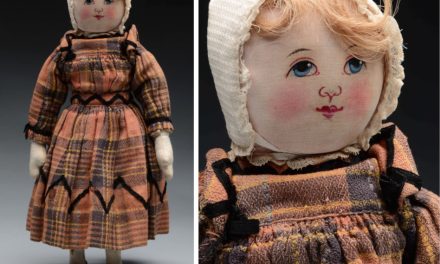Charles Wares of Michigan founded Collectible Grading Authority in 2000 to provide toy collectors with objective third-party evaluators, as well as the means to preserve collectible toys forever. In 2006 the company formed its Collectible Doll Authority branch to offer similar services to doll collectors. Chad Thompson, chief operation officer of Collectible Grading Authority, sat down with DOLLS magazine to explain how the company located in Atlanta, Ga., adds value to collectible dolls.
DOLLS: What services does Collectible Doll Authority provide to doll collectors?
Collectible Doll Authority provides a third-party grading and authentication service to both collectors and dealers around the world. Our service basically includes an in-depth inspection of each item to determine it is original and not tampered with, in addition to an assessment of the item’s condition. The grading fee also includes a high quality custom acrylic case to perfectly showcase and preserve each item we grade. A unique serial number is included on the item information label found inside the case, and a special hologram further guarantees the item is a genuine CDA-graded product.
Our newest offering to doll collectors are custom-designed sliding bottom and dome-style acrylic cases that can be opened and are used by collectors who want to showcase their collectibles in the highest possible quality case without having to send the item through the mail or have the condition rated. These cases are made to order and can fit just about any type of item. An online tool to design and order a custom acrylic case for your treasured collectible can be found on the Custom Case page. All cases are made on-site by a master acrylic craftsman at our Georgia facility.
DOLLS: How many staff members do you employ, and what qualifications are required in the field?
Eighteen staff members are employed. Their qualifications range from graphic designer to computer programmer to business degrees. All advanced knowledge in our business is taught, so the training process to become a grader or a caser is lengthy. Graders must train for at least three years before they can do the majority of the job independently.
DOLLS: How does the grading process technically work?
An item comes into Collectible Doll Authority and is unpacked and processed to make sure it matches the information on the submission form and the tiers are correct. Any potential damage from transit is noted. … The holding tray is marked with a letter, number, data and tier, but the customer’s name and original submission form are not visible. This ensures graders rarely know whose items they are grading, avoiding subconscious favoritism.
The item then moves to the grading department. A grader (usually mid-level and in training for a master grader position, which takes two to three years) enters the submission into Collectible Doll Authority’s software. … Once the submission is entered, grading sheets and a packet are printed out with random serial numbers and internal tracking information. The information is placed with the submission, which is then ready to be graded.
Next, the items are studied very closely under lighting, magnification and sometimes with other techniques. A “road map” is then created to document the item’s flaws for future reference, serving as a fingerprint to identify an item. The grader documenting these flaws decides the final grade and identifies his or her opinion of the sub-grades as well. Often he or she will ask the opinion of other mid-level graders if a piece is between grades, so they can reach a consensus. Graders are within earshot of each other at their grading stations, so a group effort can be used to grade between-grade cases. The grades are then recorded. Also, the individual graders sign off on every step, as does each other person who handles any part of the submission. Typically, at this point a master grader will review the work before an item moves to the casing department.
Next, items move to the casing department. A master grader supervises the casing room to make sure pieces are handled with the utmost care. Items are laid out for casing, and a master grader goes through to check the grades. This master grader cannot be the same person who reviewed the item in the grading room. Commonly, master graders develop their own opinions of each grade, and then reference the grading sheet to view all the information recorded. Master graders may look at an item and think it is a certain grade but then find a flaw found in the more thorough inspection which sways that opinion. If a master grader disagrees with the grade given, he or she will call on another master grader’s opinion. Rarely will the questioning master grader state his or her opinion first. If the opinions match, the piece is cased with that grade. If the opinions don’t match, all three master graders will view the item. Most often they come to a consensus, but if they cannot agree, the majority rules.
After a grade is decided upon, the item is carefully cased, sealed and moved into the case finishing process. Then the item is safely packaged and returned to the submitter.
DOLLS: What materials are used in the doll-grading process?
For grading, special lighting, magnification (both with lenses and microscopes), and substantial experience and expertise are used to review the items. For casing, acrylic is custom bent and glued to create a perfect case to tightly fit each item. Additionally, rails are custom cut to hold each item in place. … The acrylic glue is stronger than the acrylic itself, making it virtually impossible to open a case without evidence of such.
DOLLS: What does a doll collector gain by enlisting Collectible Doll Authority’s services?
The peace of mind that comes with knowing their item is authentic and unaltered; understanding how the condition of the item compares to other known examples; and the high quality protection and aesthetics offered by our top-of-the-line custom-made acrylic cases.
DOLLS: What types of dolls do collectors have graded and why?
All collectible dolls—from vintage 1960s dolls to new release dolls—are graded. Reasons can range from the desire to display or better protect items to the desire to confirm a doll’s authenticity or condition.






